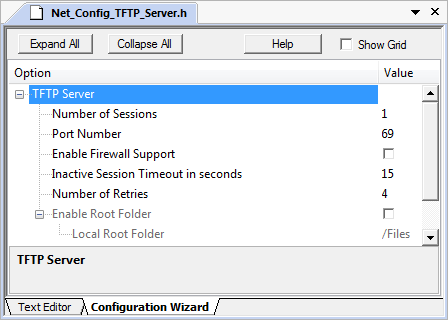 |
Network Component
Version 6.3
MDK-Professional Middleware for IP Networking
|
 |
Network Component
Version 6.3
MDK-Professional Middleware for IP Networking
|
Trivial File Transfer Protocol (TFTP) is a simple protocol for exchanging files between two TCP/IP machines. TFTP servers allow connections from a TFTP Client for sending and receiving files. The TFTP protocol supports only file send and receive operations. File delete, file move, and file rename are not supported. Due to its limitations, TFTP is a complement to the regular FTP and not a replacement. It is used only when its simplicity is important, and its lack of features is acceptable. The most common application is bootstrapping, although it can be used for other purposes.
A TFTP Server can be used to upload HTTP Web pages or to download log files to a remote PC. In this case, the File System must present in the project.
All File System interface functions are located in TFTP_Server_FS.c, which will be automatically added to your project's Network folder. The file is preconfigured for the File System Component, so no modifications are required. If you want to use another type of file system or to use a different storage media such as a hard disk, you need to add a similar file to your project.
The following functions are implemented in this module:
For access filtering the function tftp_accept_client is used. It is part of the file TFTP_Server_Access.c. You need to adapt the function to the application's needs.
Code Example TFTP_Server_Access.c

The TFTP server configuration file Net_Config_TFTP_Server.h contains the following settings: